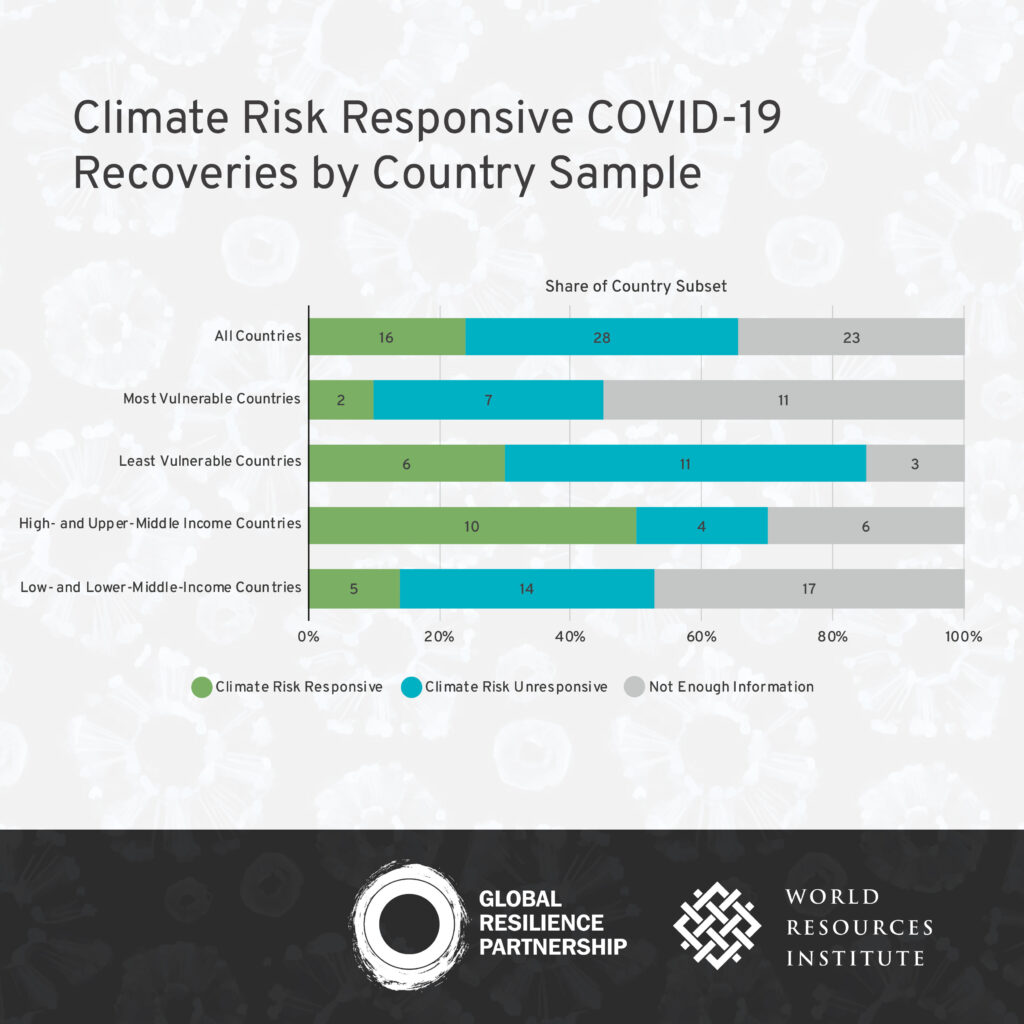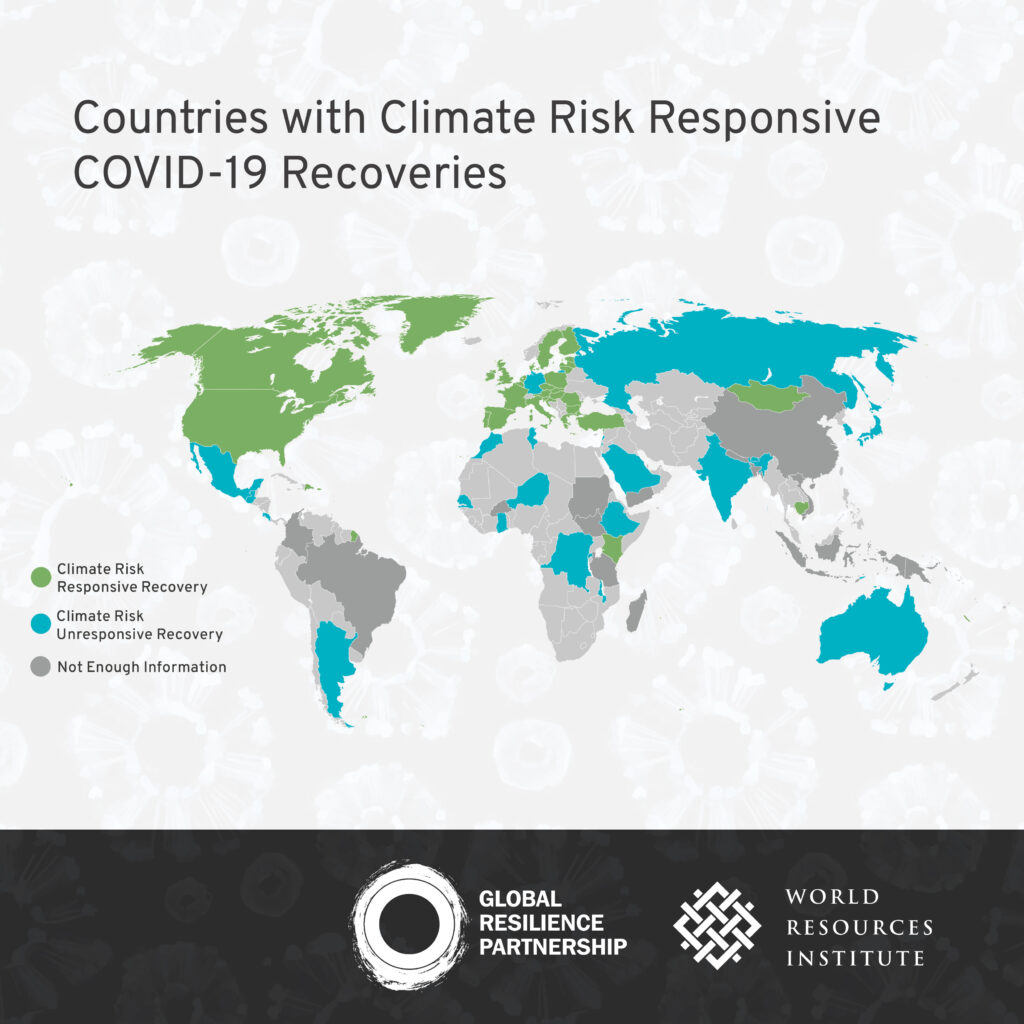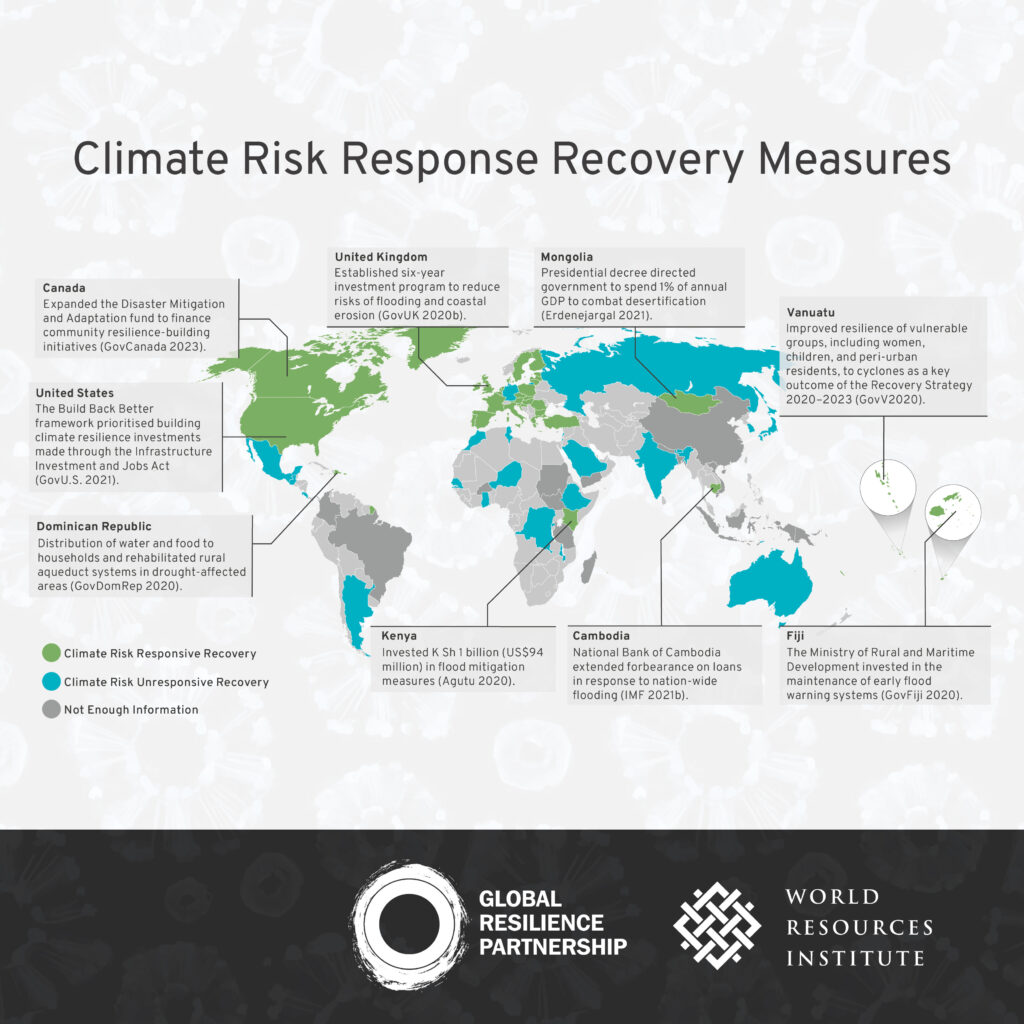Did the Global COVID-19 Recovery Address Climate Adaptation and Resilience?
An Analysis of Sixty-Seven Countries
Bradley Kratzer, Nisha Krishnan, Albert Norström, Carter Brandon, Sean Thorpe, Nathanial Matthews
This paper aims to determine to what extent countries incorporated climate adaptation and resilience into their COVID-19 recovery measures during the first two years of the pandemic.
To do this, the authors screened national policy statements, development plans, and budget documents—regardless of the funding source— approved by 67 countries between January 1, 2020, and December 31, 2021, for evidence of measures aimed at building climate resilience. To ensure geographic and economic diversity, the sample included 47 of the 68 Members of the Vulnerable Twenty (V20) Group and all Members of the Group of Twenty (G20), as well as the European Union (EU), the latter as a single entity for this analysis, since it conducted its own coordinated stimulus planning and spending. To screen each country’s recovery measures, the authors evaluated the integration of climate adaptation and resilience based on the eight adaptation components put forward by the Global Commission on Adaptation (GCA & WRI 2019; 2020).
This paper improves our understanding of whether, and how, countries leveraged their COVID-19 recoveries to build climate resilience. The key findings of the analysis reveals the paradox that a country’s income proved to be a more significant determinant of whether it used COVID funds for adaptation than its degree of vulnerability. The most vulnerable countries, which were among the poorest in the sample, were the least likely to use COVID-era resources to address climate risks.


